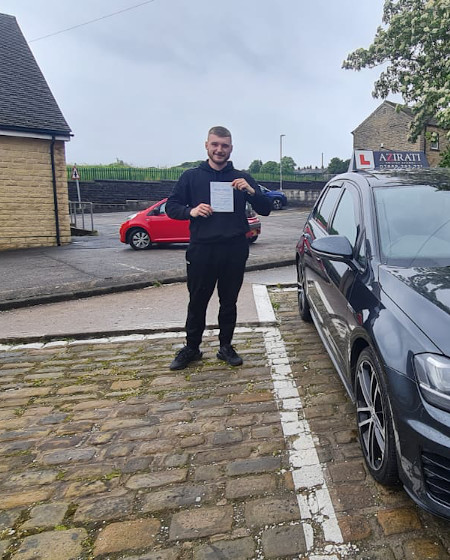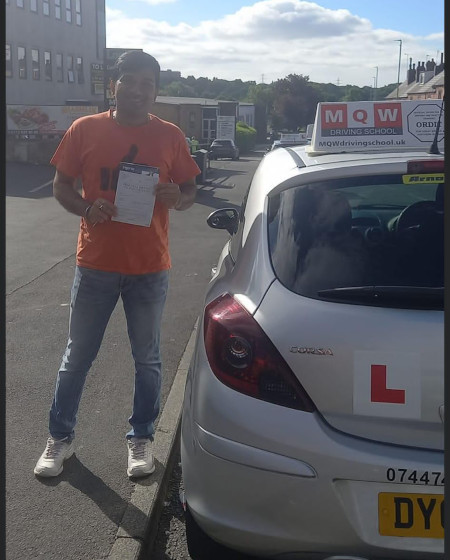
[xfield_homepage-h1]
- [xfield_benefit-list1]
- [xfield_benefit-list2]
- [xfield_benefit-list3]
- [xfield_benefit-list4]
[xfield_form-heading]
Driving is a necessary skill. This skill can open up new avenues to freedom and independence. You may be looking to learn to drive because you have to commute to work or pick up your children from school. Or you just want to make it easier to get from A-B. Our professional and friendly driving instructors are here to help you.
We welcome all levels of learners, from students just 17 who want to start lessons, to those who need our other driving lesson packages.
Both manual and automatic are the types of transmissions or gears found in a car. You must change the gears yourself in a manual car. As the name suggests an automatic car will change the gears automatically when needed.
- What Is The Difference Between Manual Cars And Automatic Cars?
- Which Is Most Popular Automatic Or Manual Cars?
- What Are The Benefits Of Learning To Drive In An Automatic Car?
- Are There Any Downsides To Driving An Automatic Car?
- Driver and Vehicle Standards Agency (DVSA) Approved Driving Instructors
- Your First Driving Lesson In Cambridge
- The Driving Test Centre You Should Choose
- [xfield_faq-title]
What Is The Difference Between Manual Cars And Automatic Cars?
Driving a manual car isn’t for everyone, especially if you live in a busy area where shifting gears and controlling the clutch are a daily part of your driving. Perhaps you have previously taken driving lessons in a manual car and found the handling of the gears difficult. Another reason drivers may choose an automatic is because they have difficulty changing the gears due to a disability. If this is you then don’t worry as you are not the only one. Many people find it easier to learn how to drive and pass their driving test in an automatic .
A car equipped with an automatic transmission changes the gears automatically for you. If your car has a manual transmission, you will have to change the gears by yourself.
A manual car will have 3 pedals the brake, accelerator and clutch. They also come with a gear stick, used in conjunction with the clutch to change gears. The clutch is operated with the left foot and the other two pedals with your right foot. When you need to change gear, you press down on the clutch. To select the correct gear for your speed, when the clutch is down simply move the gear stick for the right gear. The majority of manual cars will have a clutch pedal, however, some cars can replace the pedal with a trigger or a button on the gearstick.
An automatic car does not have a clutch, as the changing of the gears are done automatically by the car. The car will automatically change gears as the speed increases and when the car slows down, it will automatically shift to a lower gear. In an automatic car you don’t need to know how to coordinate the clutch, gear lever and accelerator. Because of this an automatic car is much more easy to learn than a manual car. Instead of a clutch pedal, there’s usually a footrest. Automatic cars don’t have a clutch, so it is much harder to stall them. Also, you can not put the car in the wrong gear or grind the gears.
A Manual’s gear stick is different than an Automatic. A manual has one reverse gear and five, possibly 6, forward gears. The four main operations of an Automatic’s gear stick are (P), park, (D) drive, (N) neutral, and (R) reverse. There are many variations but these are the main four operations. With the possible exception of neutral (which is used in heavy traffic or at traffic lights), most operations are quite obvious.
Another difference is the fact that you must use the accelerator to get a manual vehicle to move on the flat. But if you put an automatic into drive or reverse, the car will creep along all by itself. The car will move even though it is not going very fast, until you use the accelerator. This is something to keep in mind if you want to switch from a manual to an automatic car.
If you’re looking for Cambridge automatic driving lessons we can help, contact us today to book your first lesson
Which Is Most Popular Automatic Or Manual Cars?
Manual cars are the most popular in the UK, but the number of automatics being manufactured is increasing. Automatics are generally more expensive to purchase as well as to run and maintain. They tend to consume more fuel than manual cars. Additionally, they are more expensive to maintain and to insure because they are more complex to make.



What Are The Benefits Of Learning To Drive In An Automatic Car?
Although learning to drive in an automatic car can be easier than driving a manual car, it all depends on your specific difficulties. You won’t notice a difference if you struggling with a common problem such as observation.
It is possible to learn to drive an automatic car if gear changes or clutch control are difficult for you. When you learn to drive in an urban environment with lots of traffic, there is less to worry about. It is a stop-start driving style that means you’ll be changing gears constantly. This can be difficult for both experienced drivers and learner drivers.
An automatic car makes it easier when doing your driving test as you do not have the risk of stalling the car and any struggles you have with clutch control. Because there are no gears so you do not need a clutch in an automatic car, it is much easier to perform manoeuvres like a turn in traffic or a hill start.
You might have difficulty managing the gears of a manual car. If this is the case, it might be easier to learn to drive in an automatic car.
Are There Any Downsides To Driving An Automatic Car?
As you can see, automatic cars are more expensive to own, maintain and run. Automatic driving lessons can also be more costly than manual lessons because of this.
A downside to learning to drive an automatic car is that your license does not qualify you to drive a manual car. You can drive both manual and automatic cars if your test is passed in a manual car.
It is possible that your future choices in buying or renting a vehicle or van may be limited by taking your driving test in an automatic car. You will have to take your driving test again if you decide to drive a manual car.
The pass rates for automatic cars are typically lower than those for manual cars. Don’t let it discourage you! Every year, thousands of learners pass driving tests in automatic car.
If you’re looking for Cambridge automatic driving lessons we can help, contact us today to book your first lesson
Driver and Vehicle Standards Agency (DVSA) Approved Driving Instructors
Our Driving Instructors offer high-quality driving lessons in Cambridge for drivers of all ages abilities and levels. They are approved and registered with the Driver and Vehicle Standards Agency (DVSA) and have years of experience It doesn’t matter if its your your first driving lesson or if you have been driving for a while and just want to refresh your skills, you will feel calm and confident as you learn to drive.
No matter your reasons for learning to drive are, our driving instructors can help you to pass your driving test quickly and inexpensively. Each driving lesson and course is carefully designed to help you obtain your driving license as soon as possible.
If you choose to learn with one our driving instructors in Cambridge, then you can rest assured that you are in the hands of a professional driving instructor who is qualified to help you improve your driving skills and teach you to drive safely. They aim to make you a competent and confident driver.



Your First Driving Lesson In Cambridge
Your instructor will have an introductory conversation to discuss your driving skills and experience. No need to worry if you’ve never taken driving lessons before as the majority of our customers do not have any prior driving experience. They will then check your provisional driver’s license, perform an eye-check, and then discuss the basics of the car you will be learning in.
Local driving instructors know Cambridge better than anyone else. Your driving lesson will begin in a quiet area away from cars and other road users, so that you can slowly build up your confidence. First, you will learn how to use the pedals, steering, clutch control, moving away and stopping. You’ll face new challenges as you improve your driving skills.
Your driving instructor will carefully plan every lesson route so you get to experience driving through different junctions, pedestrian crossings and roundabouts.
It is crucial that you learn to drive safely right from the start as bad habits can be difficult to break. Our driving instructors are trained to help you be safe on the roads and pass your driving test. Their vast experience and knowledge in driving will help you to become a safe, confident driver.
Your driving instructor will create a written record of how you are driving. Your progress report will detail all topics you need to know to be a safe and confident driver. These include techniques such as parallel parking, turning in the road (3-point turn), reversing around a corner, and an emergency stop. It will give you an overview of where you are at and the amount you still have to learn.
If you’re looking for Cambridge automatic driving lessons we can help, contact us today to book your first lesson
The Driving Test Centre You Should Choose
While your choice of test centre will be based on your personal preference, it can have a direct impact on how you perform on the day and whether or not you pass. We recommend that you choose a test centre closest to where you have had your driving lessons. This will give you the advantage of being familiar with the area and roads when you take your driving test.
If you’re looking for Cambridge automatic driving lessons we can help, contact us today to book your first lesson
[xfield_faq-title]
Is automatic car good for long drive?
Ease of Use An automatic transmission car actually makes a lot of sense for all those who have long commutes and often have to drive through a lot of congestion. Not having to use the clutch and the gear lever frequently reduces the driver fatigue to a lot of extent.
How long does a clutch last on an automatic?
The average lifespan of a clutch is anywhere between 20,000 to 150,000 miles. Luckily, your clutch will likely give you ample notice that something is going wrong. Don't get left at the side of the road with a vehicle that won't shift into gear.
Is 20 driving lessons enough?
The average amount of driving lessons should be 40-45 hours before taking your driving test. Some people decide that 20-30 hours or maybe even less is enough – but remember that the more lessons you take, the better you will become at driving. You'll pass your test faster if you take multiple driving lessons each week.
How many months does it take to pass your driving test?
It usually takes around 30 to 40 hours to reach test standard. 2 x 1.5 hour lessons per week should allow you to reach test standard within around 2 to 3 months depending on your ability. Opting for one lesson per week can take up to six months to reach test standard.